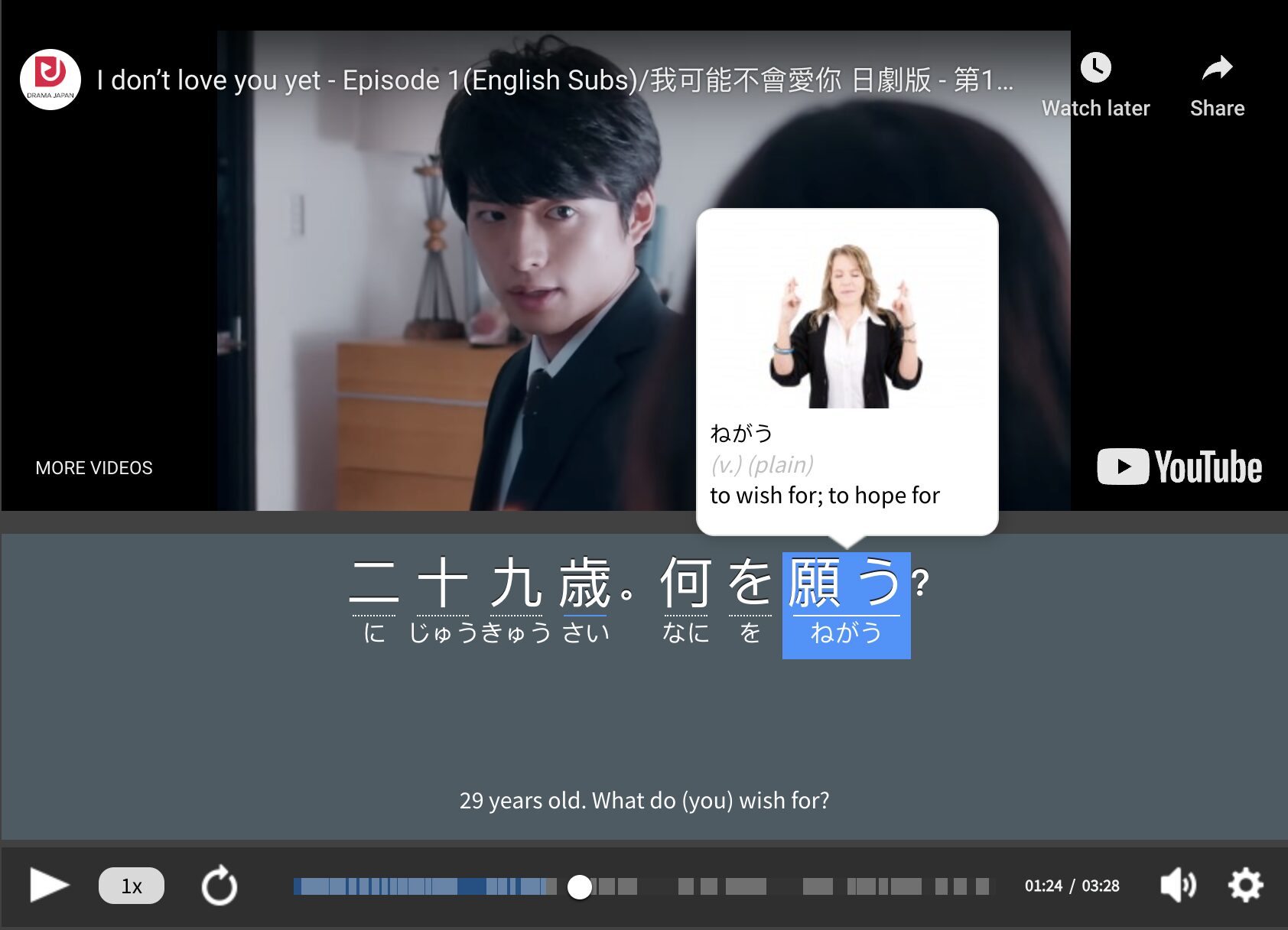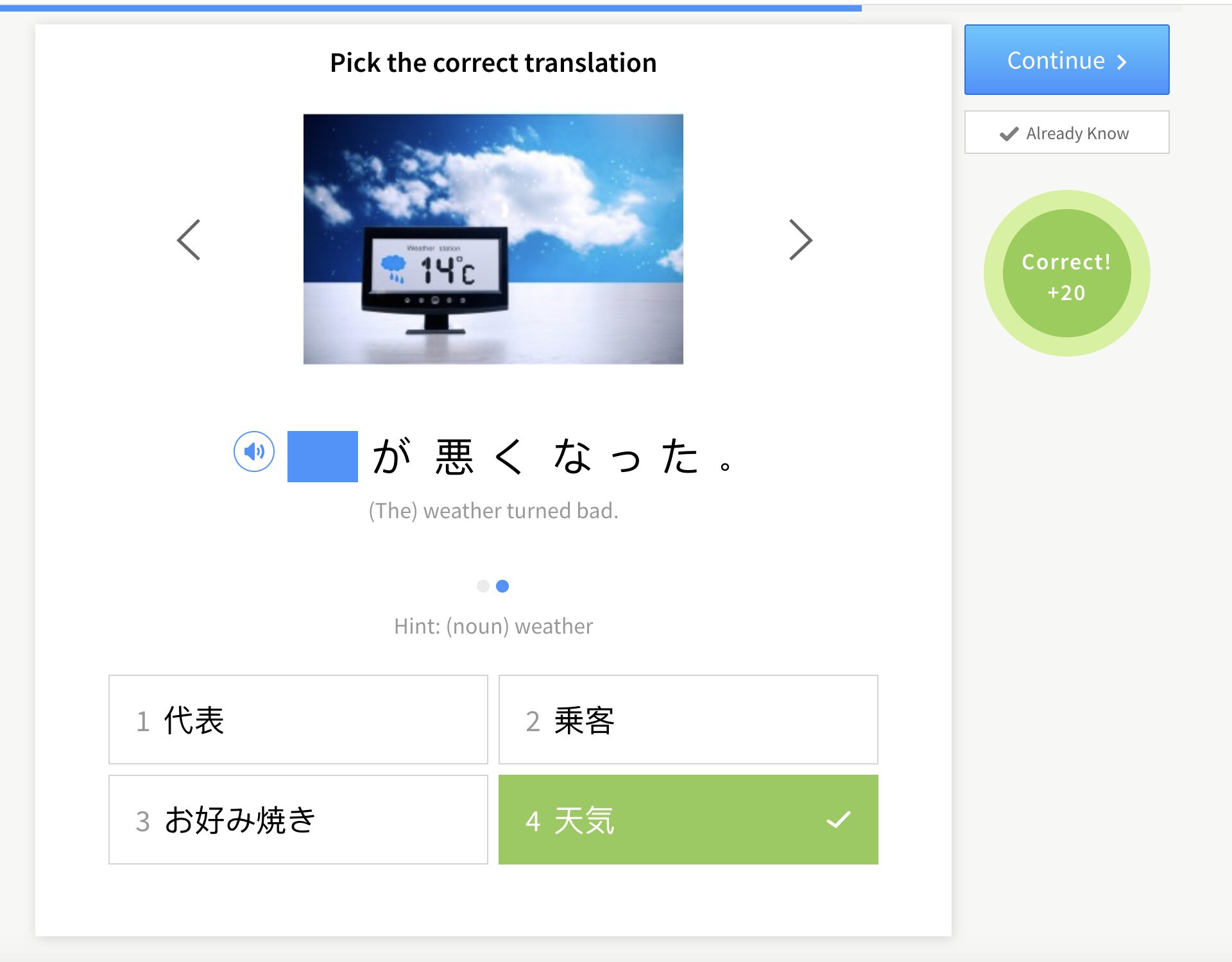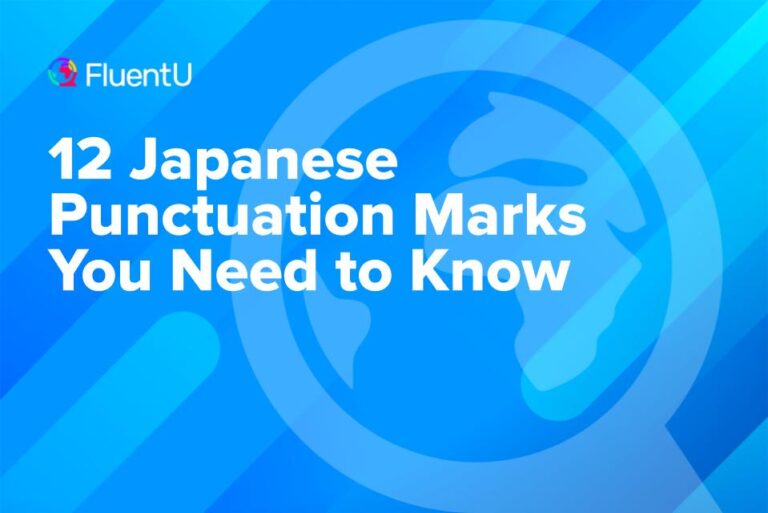14+ Essential Japanese Gestures, Plus Body Language to Avoid
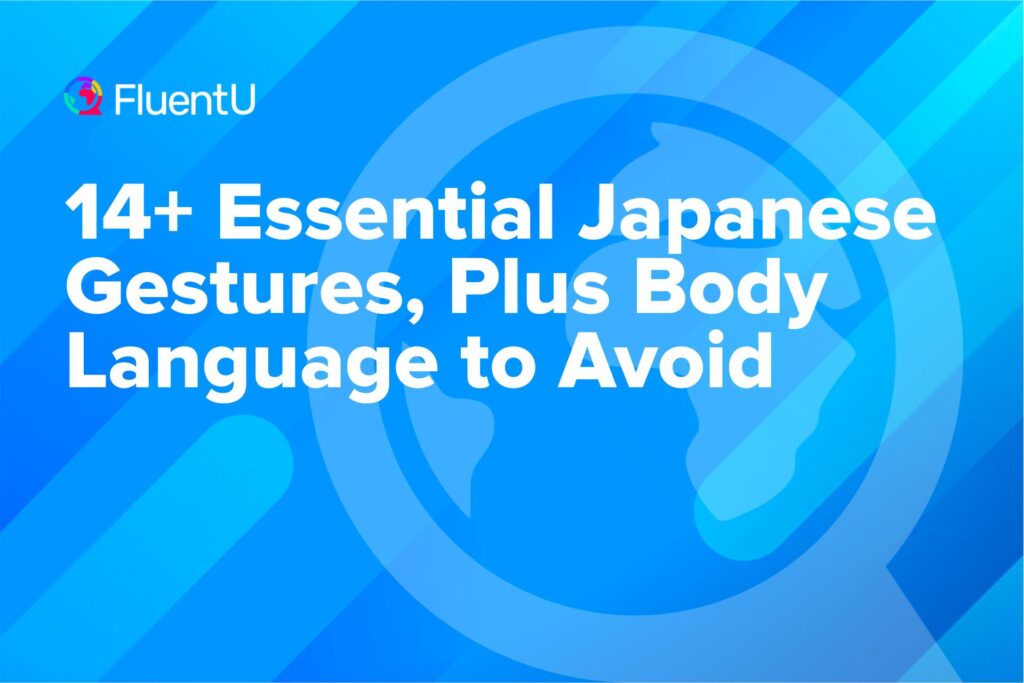
We rely much more on non-verbal forms of communication than we realize.
So knowing common and culturally-appropriate gestures can really help you communicate in Japan, especially when your limited vocabulary fails.
Here are 14 Japanese gestures that will help you make new friends and acquaintances, plus the body language you should avoid in case you offend someone.
Let’s get started!
Download: This blog post is available as a convenient and portable PDF that you can take anywhere. Click here to get a copy. (Download)
“Yes,” “No” and “Not Sure”
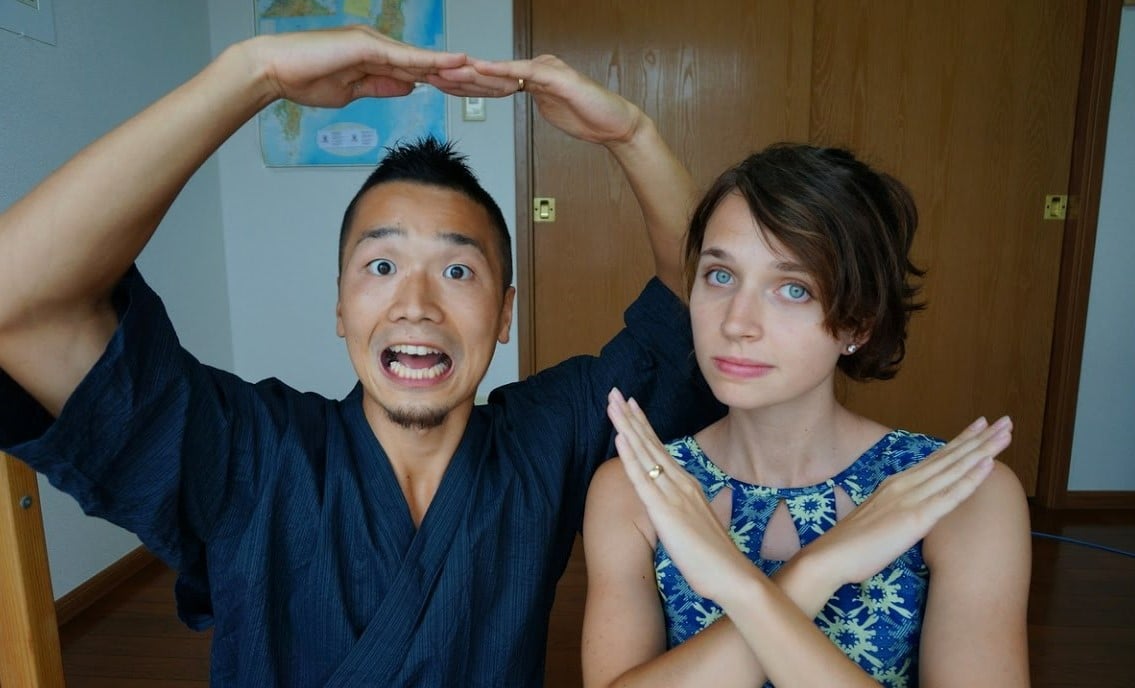
Nodding and shaking your head are fairly universal gestures, and they’ll serve you well with Japanese speakers. There are, however, Japanese equivalents of these gestures, and it’s worth at least recognizing what they mean.
1. Yes/okay
Make a big O shape above your head with your arms to indicate “okay!” in much the same way Westerners might use a thumbs-up or put the first finger and thumb together—both of which are considered fairly crass gestures in Japan.
2. No
To indicate “no” in Japanese, people will often cross their arms in an X shape in front of themselves.
This was one gesture I found a little disconcerting at first, because it seemed kind of strong and I thought I was doing something very wrong. However, I’ve since learned it isn’t meant in a rude way and is a “no” gesture not unlike shaking your head.
If someone crosses their fingers together, however, that means conflict and is intended as an insult.
Above you can see the fantastic vloggers from Texan in Tokyo demonstrating both the “yes/okay” and “no” gestures here, in an image taken from this video.
3. I don’t know/excuse me
If someone is waving one hand in front of their face, it means they don’t know the answer to your question or they’re trying to tell you they can’t speak English. Often they’ll also shake their head—along with a look of terror on their face!
If they’re holding up one hand in front of their face but not moving it, that means “excuse me” and they probably want to get past you.
The “I don’t know” gesture is just like this, only the person will also wave their hand in front of their face (a little like if there was a bad smell) and probably duck their head in a small bow.
Gesturing to People

4. Referring to yourself
Refer to yourself by pointing towards or even touching the end of your nose.
5. Referring to others
Gesture towards others with an open palm, and move your hand slowly and gently. You can point towards yourself, but don’t point at others.
6. Beckoning someone
Have you ever seen a 招き猫 (まねきねこ), the lucky cat in stores?
To Westerners, it looks like it’s waving goodbye when it’s actually beckoning you in! The Japanese way of gesturing for you to “come here” is to reach forward and let your hand go limp, then flap your fingers back and forth.
At first, it may look like a gesture to go away, but it’s an invitation to join. Just don’t use it with your seniors or superiors!
Counting

7. Counting on your fingers in Japanese
The way Japanese native speakers count on their hands can be maddeningly confusing for English speakers because it’s the complete opposite of what we’re used to.
You hold out your open palm first and then progressively lower your fingers as you count. There will be some variation depending on the person, but this is the most common way.
It’s worth watching this YouTube video for a clear explanation and demonstration of how to count on your fingers in Japanese. It’s very useful if you have trouble remembering the correct counters to use for different items.
Expressing Feelings
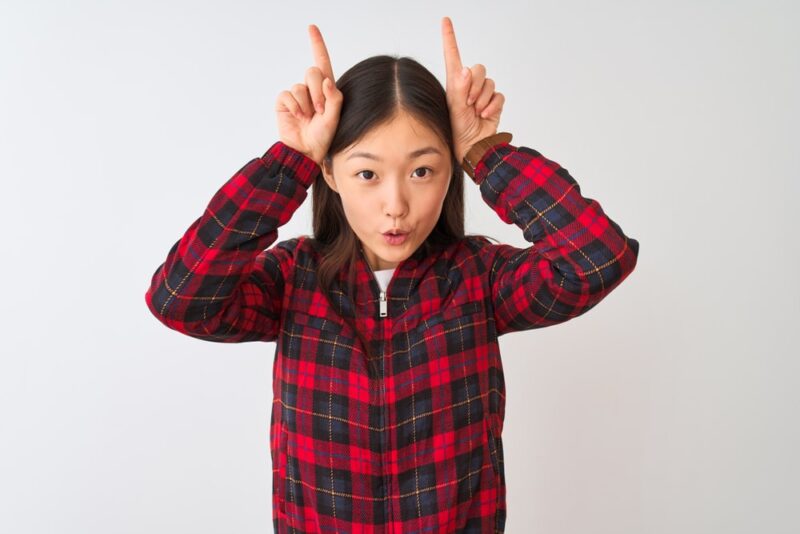
Besides basic body language like smiling or frowning, there are specific gestures Japanese speakers use to communicate particular emotions.
8. Gesture for anger
The Japanese gesture to express anger is to hold your fists beside your head with the fingers pointing towards the sky and is used to represent “devil horns.”
Above is an example of the gesture (though she doesn’t look so angry, does she).
9. Expressing embarrassment
If a Japanese person brings a hand to the back of their head, it means they’re feeling embarrassed or awkward, and it’s probably a good idea to change the subject!
10. Showing gratitude
At the end of a meal in Japan, people clap their hands once in front of their face while saying ごちそうさま or ごちそうさまでした to express gratitude.
This gesture (without the phrase) is also used to ask for forgiveness.
11. Expressing determination
If a Japanese person wants to show that they’re ready to accept a challenge or work hard at something, they’ll place one hand on the opposite bicep and flex their arm.
This gesture expresses strength and resilience, showing that the person is prepared for whatever may be in store.
Other Japanese Gestures
12. Calling dibs
I wouldn’t do this too often lest you appear greedy, but if you lick your finger and touch a person or object, it’s all yours.
13. Indicating “let’s eat/let’s drink”
To suggest to a friend that you go out for a drink together, place your thumb and index finger together like you’re holding a small cup, then motion towards your mouth like you’re taking a big swig of sake.
If you’d rather go for a meal, shape one hand like a bowl in front of you, then make “chopsticks” with the first two fingers of your other hand. Motion the “chopsticks” towards your mouth like you’re shoveling in some delicious ramen!
14. Making the peace sign
The ubiquitous peace sign is used as a standard pose for photographs in Japan, but it’s also often used as a greeting gesture, particularly for foreigners.
It expresses a sense of success, as well as being an expression of peace and goodwill.
Gestures and Body Language to Avoid in Japan

When it comes to your non-verbal communication, knowing what not to do can be just as important as what to do. So here are some gestures and body language that may cause offense in a Japanese-speaking context.
Looking people in the eye too much
In English-speaking countries, looking people in the eye is considered respectful because it shows that you’re paying close attention to what they have to say. In Japan, however, it can be considered too close for comfort, or even aggressive and intimidating.
If you’re speaking with someone and they keep staring at their shoes or looking away, perhaps they’re feeling a little overwhelmed by your stare. Try looking to the side a little, or at least glancing down or to the side a little more frequently.
Spreading out arms and legs
Anyone who has ever missed out on a seat on the train because someone has spread out wide enough to take up space for two understands how frustrating that behavior can be.
In Japan, it’s considered bad form to take up more space than you need, especially on public transport.
And while we’re on the topic of public transport, people will usually request that you speak quietly and avoid talking on the phone, and always stand up to give seating room to the elderly and people with children.
Slouching and hands in pockets
It may be the most comfortable way to stand, but in Japan leaning languorously against a wall with your hands in your pockets looks lazy and messy.
Just as it does in the English-speaking world, good posture shows that you’re alert and paying attention.
Crossing your arms
This is considered a hostile position, and it’s unlikely anybody will approach you for a chat if you’re standing with your arms crossed.
If you cross your arms during a conversation with a Japanese person you don’t know very well, they may take that as a signal that you don’t want to talk.
However, crossing your arms with your eyes closed shows that you’re thinking deeply about something, which in some conversations is just right!
Pointing
Don’t do it. Like staring someone in the eyes, it comes across as too strong and potentially aggressive. Even if you’re giving directions or gesturing towards an object, you should gently indicate direction with an open palm.
Resources to Practice Japanese Gestures
- For a fun way to test your knowledge of the gestures, check out the quiz-style video from JapanesePod101 below.
- You can learn more about body language to avoid and why from this awesome video from Japanese/American vloggers Rachel and Jun.
- You can also practice with authentic content from language learning programs such as FluentU.
FluentU takes authentic videos—like music videos, movie trailers, news and inspiring talks—and turns them into personalized language learning lessons.
You can try FluentU for free for 2 weeks. Check out the website or download the iOS app or Android app.
P.S. Click here to take advantage of our current sale! (Expires at the end of this month.)

At first, it can feel a little strange to use unfamiliar gestures, but communicating in a culturally-appropriate way is guaranteed to win you friends very quickly in Japan.
If your language level is still fairly low, learning the best Japanese gestures to express your meaning will allow you to communicate on a deeper level with native speakers while letting silence be golden.
Soon you’ll be communicating with ease—with or without words!
Download: This blog post is available as a convenient and portable PDF that you can take anywhere. Click here to get a copy. (Download)
And One More Thing...
If you want to learn Japanese with authentic materials but need a little extra support, then let me tell you about FluentU.
FluentU lets you consume the same content as native Japanese speakers, but with tools to make it easier to pick up the language while you watch. You’ll learn Japanese as it’s actually spoken by real people, unlike with other programs that use scripted content.
You can bring our learning tools directly to YouTube or Netflix with the FluentU Chrome Extension, or check out our curated video library full of clips that cover a wide range of topics, as you can see here:
FluentU brings native videos within reach with interactive subtitles. You can tap on any word to instantly see its meaning, an image, and its audio pronunciation. Click on the word for additional examples and to add it to your flaschards.
To reinforce what you've learned, you'll complete engaging exercises and see more examples of the key words from the video. FluentU keeps track of the vocab you’re learning, and gives you extra practice with words you find challenging.
Start using the FluentU website on your computer or tablet or, better yet, download the FluentU app from the iTunes or Google Play store. Click here to take advantage of our current sale! (Expires at the end of this month.)




